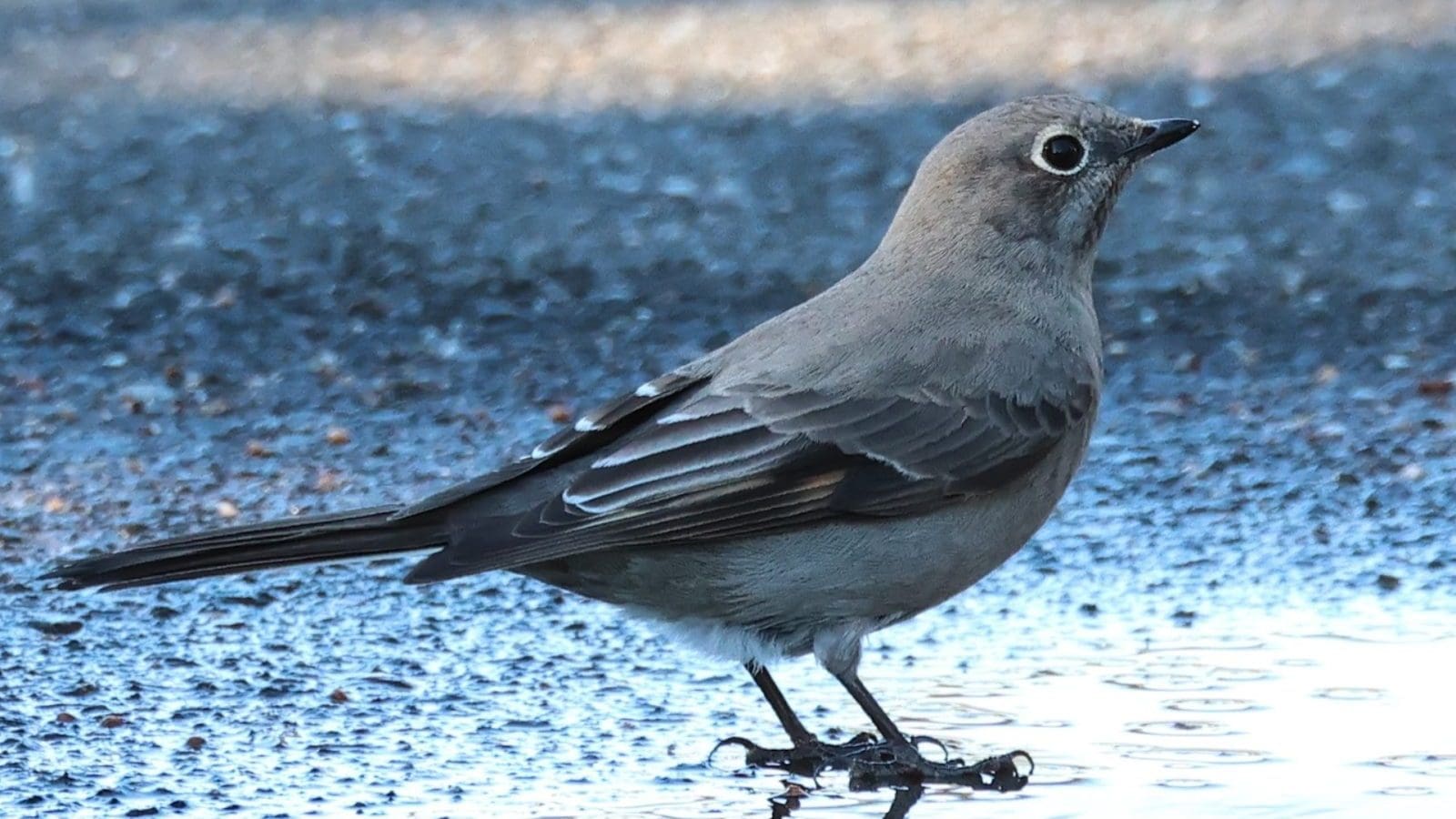Townsend’s Solitaire
Image above is Townsend’s Solitaire, Hammonasset Beach State Park, Nov. 26, 2022. Photo by Barbara Scavotto
Honorable Mention: Calliope Hummingbird
State Year List for Connecticut for 2022
By the end of the month of November 2022 CT had recorded 331 species on eBird. Three new species were added during November (see the image at right, which is an eBird SYL list sorted by date), and Townsend’s Solitaire was the 330th species added, reported to eBird on November 21 by Scott Roxbrough. Our team voted and chose Townsend’s Solitaire as the #1 BOTM for November, with an Honorable Mention second place to the Calliope Hummingbird. Comparative maps for both species are shown in the references section below.
Scott Roxbrough found the Townsend’s Solitaire on November 21 at Hammonasset Beach State Park in Madison, CT.
Here is his eBird report (https://ebird.org/checklist/S122792913) and photos from others.



Honorable Mention: Calliope Hummingbird
Lisa Mentes found and photographed the Calliope Hummingbird on November 20 at Milford Point. This was the seventh record of this species for CT. The last one was in October 2020 in Stamford, CT. This bird was not seen by others and has not been entered into eBird, and therefore will not be our #1 BOTM for this month.


You can see the latest view of this 2022 year’s CT “STATE YEAR LIST” of species here: https://ebird.org/region/US-CT?yr=cur&m=&rank=lrec Click to view eBird State Year List for CT. This is the eBird Connecticut running STATE YEAR LIST, the state list of bird species seen in 2022 thus far, as of the day you click on this link, by all birders using eBird, up to 331 species as of November 30.
ARCC UPDATE
ARCC records show that this is the seventh record for Townsend’s Solitaire in Connecticut and also the seventh record for Calliope Hummingbird in Connecticut.
eBIRD MAPS FOR NOVEMBER
eBird maps use blue and red pins/icons to display the locations of birds reported. The red pins indicate reports in the most recent thirty days, and after that time, the red pins change color to become blue pins. The red pin(s) in the several eBird maps below show the Townsend’s Solitaire reported in Connecticut during the 30-day period from November 1 through November 30, 2022.
TOWNSEND’S SOLITAIRE MAP
CALLIOPE HUMMINGBIRD MAP
REFERENCES
Wikipedia: Townsend’s Solitaire:
https://en.wikipedia.org/wiki/Townsend%27s_solitaire
Birds of the World, Calliope Hummingbird:
Wikipedia: Calliope Hummingbird: the Honorable Mention species for November.
https://en.wikipedia.org/wiki/Calliope_hummingbird
eBird articles:
Townsend’s Solitaire:
https://ebird.org/species/towsol/
Calliope Hummingbird::
https://ebird.org/species/calhum
Audubon Guide to North American Birds:
Townsend’s Solitaire:
https://www.audubon.org/field-guide/bird/townsends-solitaire
Calliope Hummingbird::
https://www.audubon.org/field-guide/bird/calliope-hummingbird
Birds Of The World link,
https://birdsoftheworld.org/bow/species/towsol/cur/introduction
Including this about their diet of Townsend’s Solitaire,
“Analysis of stomach contents collected throughout year and at multiple localities indicates overall diet of 36% animal matter, 59% berries and other fruits, and 5% seeds and flower fragments, but relatively small number of birds in sample (n = 41) precludes generalization from these data (Beal 1915a). Behavioral observations clearly indicate seasonal shift in diet: Small insects predominate in breeding season, berries and other fruit in nonbreeding season, even at sites where solitaires are resident throughout year (Sullivan 1976, Bowen 1995).
Identity of invertebrate prey during breeding season has not been studied in detail. Butterfly and moth (Lepidoptera) larvae are the most common insect prey type in stomach content analysis (Beal 1915a). Other insect food items include beetles (Coleoptera), ants (Formicidae), and dampwood termites (Zootermopsis angusticollis; Beal 1915a, Bent 1949). Identity of aerial insects captured by sallying from treetops is unknown.
Diet on winter territories well documented: almost entirely juniper berries. At Flagstaff, AZ, behavioral observations and stomach content analysis (n = 13 birds) both indicate winter diet of 93-97% (by dry weight) one-seed juniper berries, remaining 3-7% mistletoe (Phoradendron sp.) berries (Salomonson and Balda 1977). Diet similar at other sites: 100% western juniper berries at Eagle Lake, Lassen Co., CA, and 100% (or nearly so) Rocky Mountain juniper berries at Missoula, MT (Sullivan 1976, Lederer 1977b, Bowen 1995). Berries of eastern redcedar probably the primary food item of solitaires wandering east of main range during winter (Lange 1988, Svingen 1993).
During fall migration and for birds wintering in habitats other than juniper woodlands, diet includes fruits of many other species besides juniper: American mountain-ash (Sorbus americana), crabapple (Malus sp.), winterberry holly (Ilex verticillata), buckthorn (Rhamnus cathartica), currant (Ribes sp.), serviceberry (Amelanchier alnifolia), hawthorn (Cratageus sp.), chokecherry (Prunus virginiana) and bitter cherry (P . emarginata), kinnikinnick (Arctostaphylos uva-ursi), Pacific madrone (Arbutus menziesii), common hackberry (Celtis occidentalis), and Douglas hackberry (C.douglasii), rose (Rosa sp.) hips, sumac (Rhus sp.) and poison ivy (Toxicodendron sp.), waxwork (Celastrus sp.), honeysuckle (Lonicera sp.), Russian olive (Elaeagnus commutata), and elderberry (Sambucus sp.; Beal 1915a, Sullivan 1976, Lange 1988, Svingen 1993, RVB).”
Crossley ID Guides online:
CREDITS / CO-AUTHORS
This report is a product of the COA Seasonality Project, a team consisting of A.Dasinger, C.Ehlinger, R.Gedney, D.Jernigan, C.Repasz, and co-chaired by M.Bull and T.Robben (https://www.ctbirding.org/about/coa-board-of-directors/ ). It is advised by C.Wood and ARCC: specifically by F.Mantlik, F.Gallo, P.Rusch, G.Hanisek (https://www.ctbirding.org/arcc/committee-members/ ).

